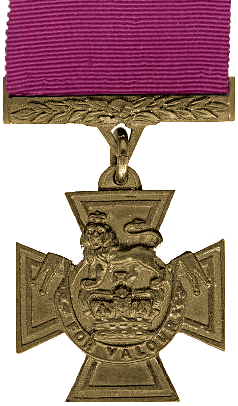James Dalgleish Pollock facts for kids
Quick facts for kids
James Dalgleish Pollock VC
|
|
|---|---|
 |
|
| Born | 3 June 1890 Tillicoultry, Clackmannanshire, Scotland |
| Died | 10 May 1958 (aged 67) Ballochmyle, Ayrshire |
| Buried |
Ayr Cemetery
|
| Allegiance | |
| Service/ |
|
| Years of service | 1914–1919 |
| Rank | Captain |
| Unit | The Queen's Own Cameron Highlanders |
| Battles/wars | World War I |
| Awards | Victoria Cross |
| Other work | Observer Lieutenant: Royal Observer Corps (1940–1946) |
Captain James Dalgleish Pollock was a brave Scottish soldier. He received the Victoria Cross (VC), which is the highest award for bravery in the face of the enemy. This special medal is given to soldiers from the United Kingdom and Commonwealth countries. James Pollock was born on June 3, 1890, and he passed away on May 10, 1958, at the age of 67.
Contents
A Heroic Act: The Victoria Cross
James Pollock was 25 years old during the First World War. He was a corporal in the 5th Battalion of The Queen's Own Cameron Highlanders, a part of the British Army. His amazing act of bravery happened during the Battle of Loos.
On September 27, 1915, near a place called the Hohenzollern Redoubt in France, enemy soldiers were trying to take over a trench called "Little Willie" Trench. Corporal Pollock saw what was happening. He asked for permission and then, without caring about the danger, he climbed out of the trench all by himself.
He walked along the top edge of the trench. From there, he threw bombs at the enemy soldiers, forcing them to retreat. Even though he was under heavy machine-gun fire the whole time, he managed to stop the German advance for an entire hour. Eventually, he was wounded, but his actions saved many of his comrades. For this incredible bravery, he was awarded the Victoria Cross.
More About James Pollock's Bravery
After his heroic deed, James Pollock became an officer in the Cameron Highlanders in 1916. He left the Army in 1919 as a Captain.
His bravery in saving his comrades in the "Big Willie" trench was truly outstanding. Just over two weeks later, his second cousin, James Lennox Dawson, also won the Victoria Cross in the same trenches during the same battle! Their actions were very similar. Dawson saved his colleagues by going "over the top" under machine-gun fire. He rolled away gas canisters that had been opened by German shells. Both men were 25 years old and born within six months of each other in the small Scottish town of Tillicoultry. Both were celebrated back home in Scotland with special events in December 1915.
Serving Again: World War II
James Pollock volunteered to serve again during World War II. He joined the Royal Observer Corps (ROC). The ROC was a group of people who watched the skies for enemy aircraft. He became an Observer Officer and worked full-time as a Duty Controller in the Aberdeen (Ayr) Group.
It is believed that he was the only officer in the entire history of the Royal Observer Corps to hold the Victoria Cross. He, along with other members of his group, finished their service around May 12, 1945, when the war ended.
To celebrate the end of the Second World War, the Air Ministry organized a huge gathering at RAF North Weald in Essex. About 2,000 members of the ROC from all over the UK were invited. King George VI had approved a special flag, called an Ensign, for the Royal Observer Corps. This flag was dedicated at a service on June 24, 1945.
On that day, the 2,000 observers marched in uniform for the first time. The RAF Band played music, and Lord Beatty took the salute. The parade then formed a large square, and the Royal Observer Corps Ensign was presented by Lord Beatty. Observer Lieutenant Pollock, with his Victoria Cross, had the honor of carrying the Ensign. He led the large group of observers, flanked by two senior non-commissioned officers. A film of this special day is kept at the Imperial War Museum in London.
Where to See His Medal
James Pollock's Victoria Cross medal is on display at the Regimental Museum of Queens Own Highlanders. This museum is located at Fort George in Inverness-shire, Scotland.

